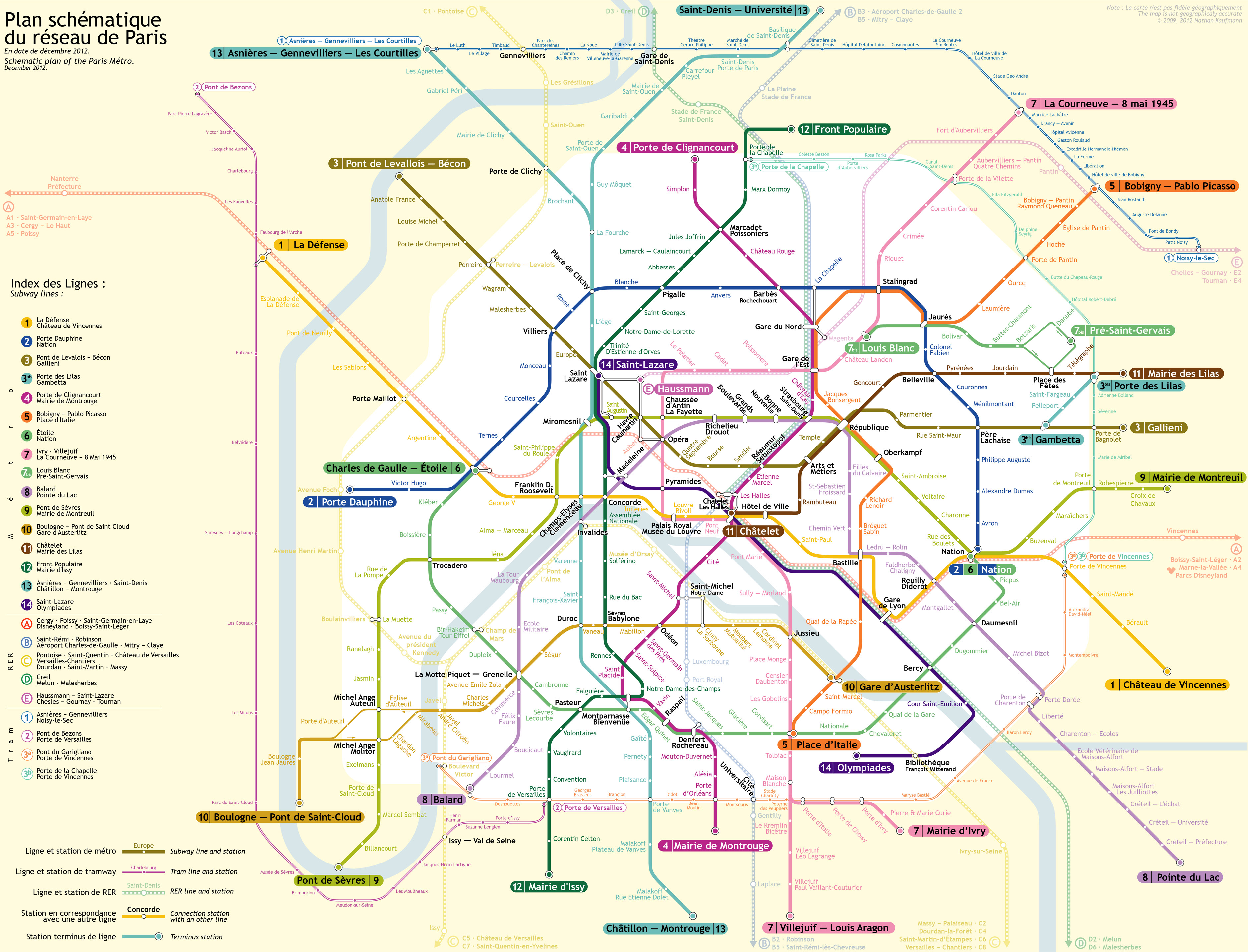Population (people): 2,273,305
Number of stations: 303
Length (km): 214
Riders per annum (billions): 1.541
The Paris Metro is the second-busiest subway system in Europe, after Moscow. It carried 1.541 billion passengers in 2012 (up from 1.524 billion in 2011) or about 4.210 million passengers a day. It is one of the densest metro systems in the world, with 245 stations within the 86.9 km2 (34 sq mi) of the city of Paris.
Number of lines: 16, numbered 1 to 14 with two minor lines, 3bis and 7bis.
The metro is mostly underground; surface sections include sections on viaduct in Paris (lines 1, 2, 5 and 6) and at the surface in the suburbs (lines 1, 5, 8 and 13). In most cases both tracks are laid in a single tunnel. Almost all lines follow roads, having been built by the cut-and-cover method near the surface (the earliest by hand). Line 1 follows the straight course of the Champs-Elysées and on other lines some stations (for example, Commerce) have platforms that do not align: the street above is too narrow to fit both platforms opposite each other. Many lines have very sharp curves. The specifications established in 1900 required a very low minimum curve radius by railway standards, but even this was often not fully respected, for example near Bastille and Notre Dame de Lorette. Parts of the network are built at depth, in particular a section of line 12 under Montmartre, the sections under the Seine, and all of line 14.
Lines 7 and 13 have two terminal branches.
Source: Wikipedia

